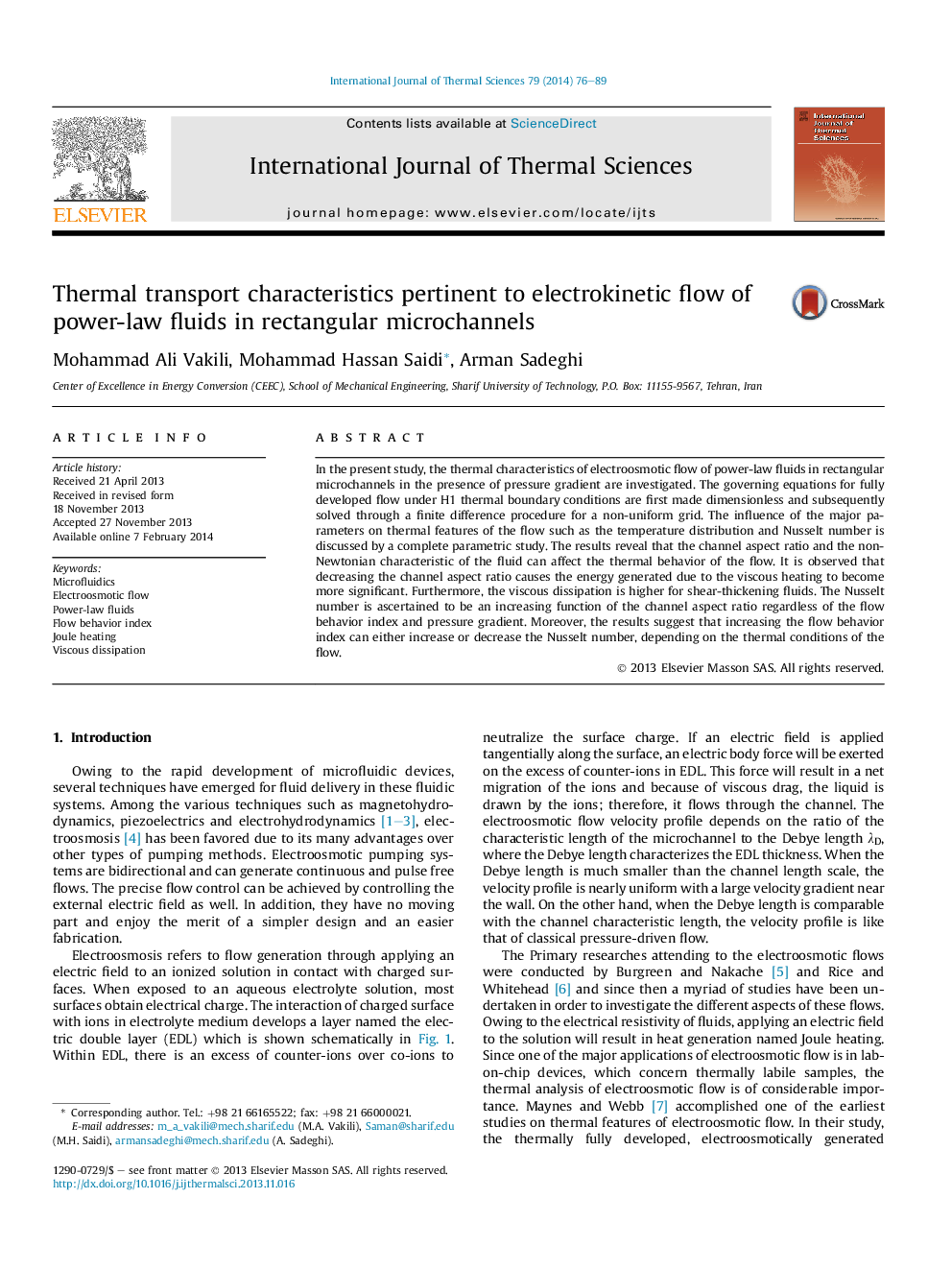| Article ID | Journal | Published Year | Pages | File Type |
|---|---|---|---|---|
| 668337 | International Journal of Thermal Sciences | 2014 | 14 Pages |
•Electroosmotic flow of power-law fluids in rectangular microchannels in the presence of pressure gradient is analyzed.•The governing equations are numerically solved using a finite difference procedure for a non-uniform grid.•Viscous heating effects become more prominent when channel approaches a square shape.•The rate of viscous dissipation is higher when favorable pressure gradient exists in the channel.•Nusselt number is an increasing function of channel aspect ratio irrespective of flow behavior index and pressure gradient.
In the present study, the thermal characteristics of electroosmotic flow of power-law fluids in rectangular microchannels in the presence of pressure gradient are investigated. The governing equations for fully developed flow under H1 thermal boundary conditions are first made dimensionless and subsequently solved through a finite difference procedure for a non-uniform grid. The influence of the major parameters on thermal features of the flow such as the temperature distribution and Nusselt number is discussed by a complete parametric study. The results reveal that the channel aspect ratio and the non-Newtonian characteristic of the fluid can affect the thermal behavior of the flow. It is observed that decreasing the channel aspect ratio causes the energy generated due to the viscous heating to become more significant. Furthermore, the viscous dissipation is higher for shear-thickening fluids. The Nusselt number is ascertained to be an increasing function of the channel aspect ratio regardless of the flow behavior index and pressure gradient. Moreover, the results suggest that increasing the flow behavior index can either increase or decrease the Nusselt number, depending on the thermal conditions of the flow.
